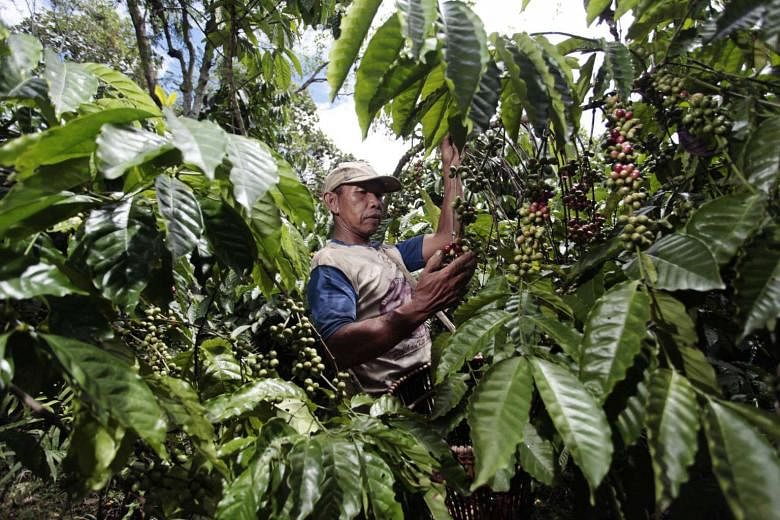JAKARTA (BLOOMBERG) - As the effects of the most severe El Nino in almost 20 years still reverberate around the world, preparations are already under way for La Nina.
Indonesia is set to distribute water pumps to farmers and assessing its rice stockpiles in anticipation of the weather event materialising in October, Agriculture Minister Amran Sulaimantold reporters in Jakarta on Wednesday (Jan 6).
La Nina, sometimes thought of as El Nino's opposite, typically brings more rainfall to the region, threatening crops with flooding and delaying harvests. Australia says El Nino has peaked and there's a chance of its counterpart occurring in the second half of the year.
El Nino has hampered cocoa crops in Ivory Coast, curbed the monsoon in India and forced the Philippines to import more rice.
Indonesia deployed planes last year for artificial rain to help alleviate drought conditions that restricted palm oil output and exacerbated forest fires that engulfed the region in haze. Based on the 26 El Nino events since 1900, about 50 per cent have been followed by a neutral year with 40 per cent by La Nina, Australia's weather bureau said Tuesday (Jan 5).
"We'll anticipate early, like we did on drought," Sulaiman said.
Palm oil output may stagnate or fall about 3 per cent this year, according to Bayu Krisnamurthi, the head of the government-appointed Indonesia Estate Crop Fund for Palmoil.
El Nino is a warming in the equatorial Pacific Ocean, while La Nina is a cooling of the waters. Each can impact agricultural markets as farmers contend with too much or too little rain. A large part of the agricultural US tends to dry out during La Nina events, while parts of Australia can be wetter than normal.
The previous La Nina began in 2010 and endured into 2012. Conditions typically last between 9 months and 12 months, while some episodes may persist for as long as two years, according to the National Oceanic and Atmospheric Administration. Both La Nina and El Nino tend to peak during the Northern Hemisphere winter.

